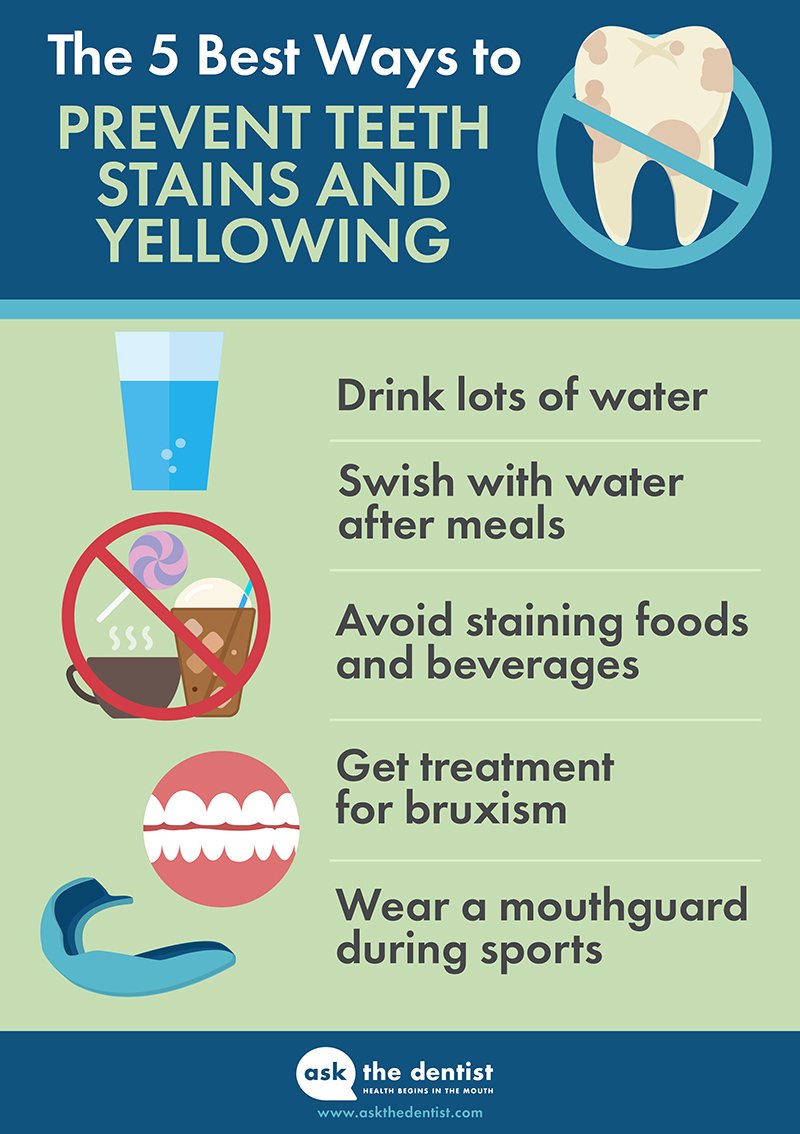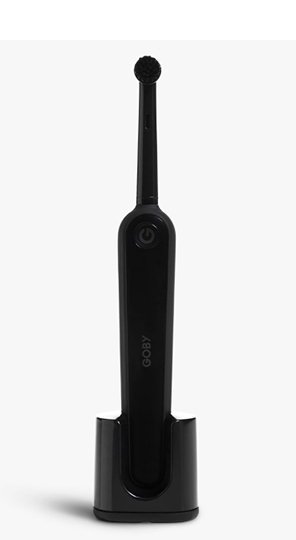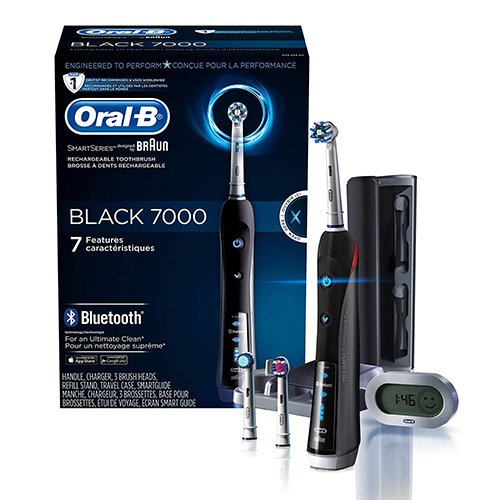Teeth stains and yellowing happen to everyone. Whether it’s due to genetics, damage, or surface stains from foods and beverages, the reality is that over time, staining occurs. Meanwhile, aging can cause yellowing, even if your dental hygiene routine has been perfect.
And while it is possible to whiten teeth and eliminate some of this discoloration, it’s important to remember that many teeth whitening methods can cause damage to the teeth and the rest of the mouth.
As we become more aware of the foods we eat and the supplements we take, it’s important that we also take an all-natural approach to oral and dental health, including teeth whitening.
Certainly, some all-natural methods are better than conventional whitening treatments that are filled with chemicals that can disrupt the oral microbiome and potentially damage the gums. But even natural teeth whitening methods can cause damage to the teeth, eroding the enamel and potentially causing more damage—and staining—in the future.
Before we discuss which teeth whitening methods are both effective and safe, let’s examine how teeth become discolored in the first place.
What Really Causes Dental Stains and Yellow Teeth?
The first thing to understand is that there are two basic parts to a tooth—the non-living tooth (enamel) and the inner, living part of the tooth (dentin). Here are several factors that can impact either the enamel or the dentin of the tooth, causing varying degrees of staining of yellowing.
Age: Dentin naturally yellows as it ages, and because there aren’t currently any ways to whiten the inner part of the tooth, teeth appear more yellow as they get older. This is because the outer, enamel of the tooth acts like a clear window that reflects the color of the inner dentin.
Grinding: Grinding can prematurely age the teeth, leading to early yellowing, among other issues. When you grind your teeth, the force causes premature aging and shrinking of the dentin—which, again, shows up as yellowing.
Dental trauma: Like grinding, trauma from falls or accidents can cause damage to the tooth that results in accelerated aging and yellowing.
Poor diet: Not having adequate nutrition can also be a cause of premature tooth aging, as all parts of the body—including the teeth—suffer from a lack of the vitamins and nutrients that can support optimal health and prevent aging. And, of course, aging teeth appear more yellow.
Foods and drinks: Unlike dentin, that becomes discolored from age and trauma, enamel is often stained from the foods and drinks we consume. Naturally, highly pigmented substances like wine, tea, coffee, and tobacco, causing the most damage. For these types of stains, teeth whitening products—and even a solid cleaning at the dentist’s office—can reverse some of these stains and lighten up the enamel of teeth.

Get Dr. B’s Dental Health Tips
Free weekly dental health advice in your inbox, plus 10 Insider Secrets to Dental Care as a free download when you sign up

The Problem with Most Teeth Whitening Methods
Now, when you notice that your teeth are a little yellower than you’d prefer, or you see that your favorite red wine is leaving an undesirable stain, you may want to try a conventional teeth whitener. Unfortunately, popular teeth whitening procedures, like laser or halogen whitening, are not good for your teeth. And even teeth whitening strips can have consequences if not used properly.
The problem with over-the-counter teeth whitening kits is that whitening strips struggle to reach every part of the tooth, which can lead to uneven whitening. Additionally, it’s difficult to keep the whitening solution from touching the gums, which can cause tissue irritation. And since the FDA doesn’t regulate teeth whiteners, it can be difficult to understand which types are safe to use.
Conversely, you may be interested in natural teeth whitening, and you may have heard about using apple cider vinegar, strawberries, or baking soda to whiten teeth. Unfortunately, the effectiveness of these methods is a result of the acids in the products eating away the top layer of enamel. While that process will reveal whiter enamel underneath, it will also speed up the aging process of your teeth, leading to further yellowing and damage down the road.
So the question is: Are there natural teeth whitening options that are both safe and effective?
The answer is YES.
Here are some the safest ways to whiten your teeth naturally—and the only methods I actually recommend.
Safe, Effective, and All-Natural Ways to Whiten Teeth
Activated Charcoal
Activated charcoal has a long history as a substance used to treat poisoning, with the first patient being treated nearly two centuries ago. That’s because the charcoal adsorbs—or binds with—much of what it touches.
Even though there are now other, more preferred methods for treating poisonings, the binding capabilities of activated charcoal have made it a popular addition in a number of beauty products, including toothpastes and teeth whiteners.
Unlike whitening kits you might find in a store, which use hydrogen peroxide to whiten the dentin beneath the tooth’s enamel, activated charcoal removes surface stains only. This makes it a good option for naturally reversing stains caused by foods, beverages, or tobacco.
To give this product a try, I recommend smearing an activated charcoal paste onto the teeth and letting it sit for 5-10 minutes before rinsing and gently brushing away any excess.
My DIY recipe for charcoal toothpaste is safe to use as a regular toothpaste, but it shouldn’t be used on a daily basis. You should also keep in mind that other products on the market may be too rough for the teeth, as charcoal can be abrasive.
To stay on the safe side, I recommend checking the Relative Dentin Abrasivity of any toothpaste before purchasing.
Turmeric
Turmeric is a bright yellow herb that comes from the ginger plant family. You might know it as the spice that gives curry powder it’s yellow color, but it’s also been known as a healing herb in traditional Ayurvedic medicine for more than 5,000 years.
There aren’t currently any studies that have evaluated turmeric’s effectiveness as a teeth whitener, though there is a lot of anecdotal support suggesting that it effectively removes extrinsic stains.
However, a 2012 study suggested that the curcumin might help fight against gingivitis, and it was a strong contender against mouthwashes when it came to removing plaque, bacteria, and inflammation. All of that is to say, even if turmeric doesn’t whiten your teeth, it may benefit your overall oral health in the meantime.
Typically, turmeric is mixed with coconut oil and applied to teeth to aid in whitening. In this case, it may be that the coconut oil helps to strip away the cavity- and stain-causing biofilm, while turmeric acts an abrasive, furthering the stain removal process. But again, there aren’t currently any studies to verify.
Like turmeric, coconut oil has many oral health benefits, and I’m not concerned about the abrasiveness of the herb, so I think this is a whitening method worth trying.
Whitening toothpaste
You’ve likely seen toothpastes claiming their whitening powers, from major brands to natural options at your local health food store. But there’s something important to note here: Whether it’s a natural or conventional toothpaste, there’s really no such thing as a whitening toothpaste.
Toothpastes can’t whiten your teeth—they can only help to clean them.
I recommend making your own toothpaste, since traditional toothpastes include all kinds of questionable ingredients like triclosan, sulfates, and artificial colorings.
Stain-removing toothbrush
A good toothbrush can be an effective natural teeth whitening method because it can help to remove extrinsic stains from teeth.
For whitening, my favorite toothbrush is the Goby toothbrush, an oscillating model with a soft brush head. The motion of oscillation is most effective for removing surface stains. If you’d rather try a more common consumer model, Oral-B models with 3-D White replacement heads are a great alternative.
Best for Stain Removal
My Pick
My Pick
Most importantly, however, make sure you’re brushing the right way, because toothbrush bristles can damage your enamel if not used appropriately.
To brush properly, place the brush head over a tooth and wiggle it slightly, allowing the bristles to surround the tooth and work their way in between your teeth. Once you’ve finished, move onto the next tooth. To further ensure that you’re not over-brushing, try brushing with your non-dominant hand.
The Best Ways to Prevent Teeth Stains
The truth is the best natural teeth whitener is preventing teeth from becoming stained or prematurely yellowing in the first place. There are a few ways you can help keep the enamel of the tooth from getting stained in the first place:
- Drink lots of water. Drinking water helps to reduce the amount of contact staining agents get with your teeth even as you’re consuming them. So, for example, drink a glass of water while you’re drinking coffee, and the coffee will have less time to stain the teeth.
- Swish with water after meals. As often as possible, swish your mouth out with water after you eat. Much like drinking a glass of water, this can help wash away some of the staining agents that naturally occur in certain healthy foods like berries.
- Avoid staining foods and beverages. Wine, tea, coffee, and foods that contain food dye all contribute to dental staining. If your goal is to maintain a whiter smile, avoiding these can be helpful. Or, again, be sure to swish the water after consuming.
- Get treatment for bruxism. As mentioned, grinding can lead to premature aging of your teeth, so speak with your dentist about treating this issue to prevent yellowing in the future.
- Wear a mouthguard during sports. Like grinding, damage to teeth can also lead to premature aging of the teeth and yellowing. When you’re involved in contact sports, be sure to protect your teeth with a mouthguard.

Conclusion
No matter which whitening method you choose, the most important thing to remember is that you shouldn’t exchange oral health for cosmetic benefit.
There is no medical reason to whiten teeth. It’s a personal preference, and that’s fine! Just make sure you’re choosing a method that will keep your mouth healthy, and that you keep your expectations to a realistic level.
Aside from the natural solutions mentioned here, preventing staining and premature yellowing is the best way to protect the natural color of your teeth.
However, if you do want professional results, the safest and most effective way to whiten teeth, in my opinion, is through custom-built teeth whitening trays from your dentist. While not an all-natural choice, they provide the best results and are unlikely to cause any harm to your teeth.
What Is the Best Whitening Toothpaste?



 DIY Turmeric Teeth Whitening Paste
DIY Turmeric Teeth Whitening Paste